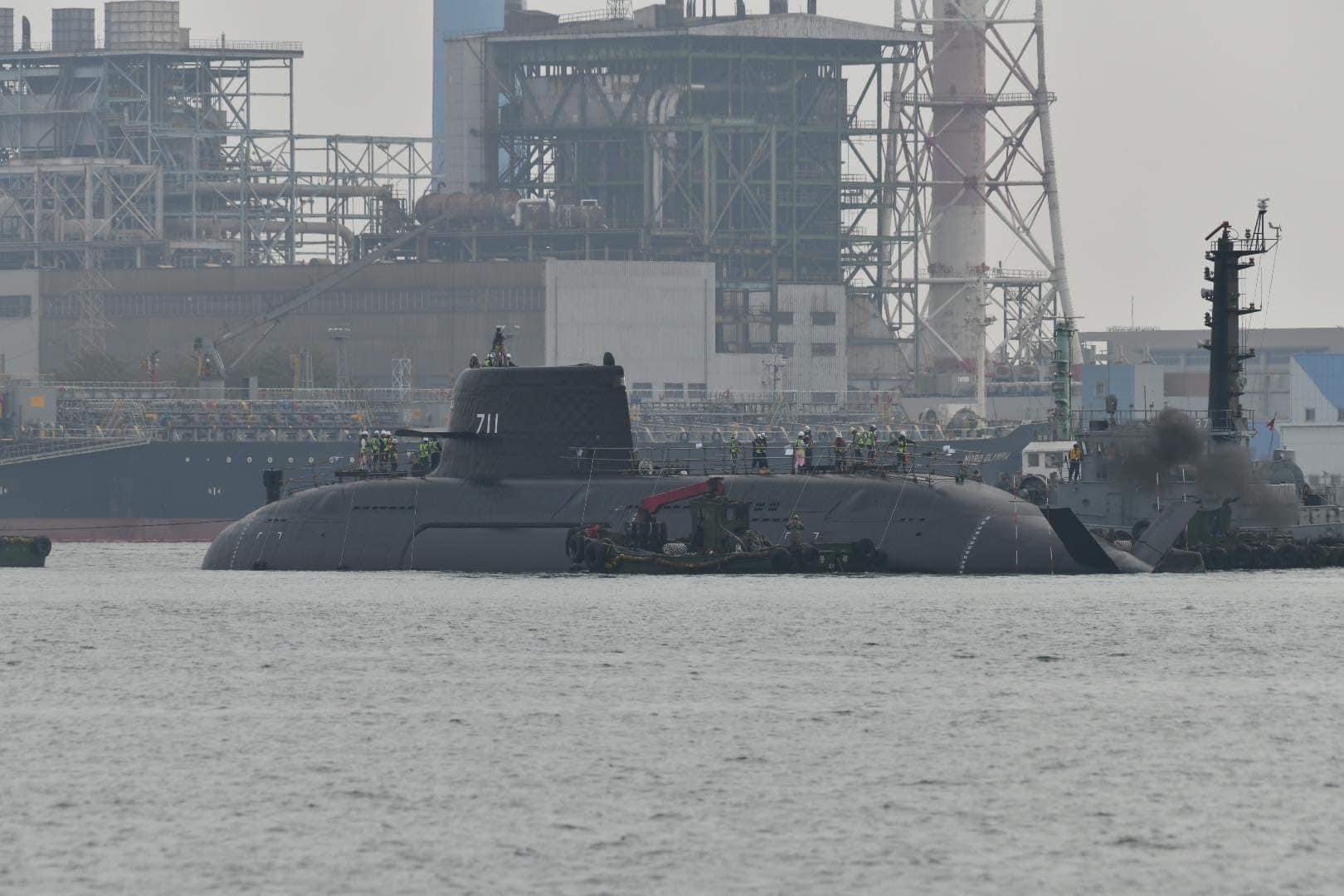On February 27, Taiwan raised the curtain on its first domestically-developed Narwhal submarine when it entered open waters. The images of the vessel that surfaced on X reveal intriguing and advanced features that had previously been concealed.
Dubbed “Narwhal” in English and “Hai Kun” in Chinese, this prototype has undergone rigorous harbor acceptance tests at the CSBC Corp. shipyard in Kaohsiung since October last year, following its unveiling ceremony in late September.
The Hai Kun (SS-711), a diesel-electric design, represents the first of eight planned hulls poised to rejuvenate Taiwan’s aging submarine fleet.
On the evening of February 26, the prototype was towed from the CSBC Corp. factory to the nearby Jong Shyn floating dock No. 8 before being transferred to an adjacent dry dock for final harbor acceptance tests (HAT) on February 27.
The vessel’s journey from the factory to the floating dock and subsequently to the dry dock unfolded in three distinct stages, culminating in the launching of the warship.

CSBC Corp.’s test operation schedule outlined that the first phase involved towing the floating dock to the Pier 2 navigation channel from 8 a.m. to 10:30 a.m. on February 27.
The second phase, from 10:30 a.m. to 1:30 p.m., encompassed the detachment of the vessel from the floating dock, involving detailed inspection, personnel positioning, and precise placement of the warship in the water.
Finally, the third phase, from 1:30 p.m. to 2:30 p.m., centered on towing the submarine into the CSBC dock, marking the culmination of the operation.
As the Narwhal transitioned from the factory to the floating dock, many spectators, including media representatives, seized the opportunity to capture videos and photographs of the indigenous submarine.
Earlier reports had suggested that acceptance trials for the submarine would commence in late April, with delivery anticipated before the end of the year. There have, however, been indications of potential delays in the process.
According to retired navy captain Jiang Hsin-Biao, a scholar of the Taiwanese think tank, the Institute for National Defense and Security Research (INDSR), the HAT tests on February 28 at the dry dock were aimed to test the submarine’s actual displacement against its original design.
These tests include an inclining test to assess the ship’s stability and determine the coordinates of its center of gravity.
Additionally, the final HAT process at the dry dock will involve tests on all ship equipment, ventilation systems, and engine systems individually before conducting a comprehensive test by integrating the systems.
According to the Taiwanese military, successful completion of the HAT tests is a prerequisite for advancing to the next phase: the Sea Acceptance Tests (SAT).
Fresh Insights Unveiled In The Photographs
Last year, during the launch event, crucial components such as the bow, torpedo tubes, and other sensitive elements were shielded under the Republic of China (Taiwan) flag. This precautionary measure, explained by CSBC Chairman Cheng Wen-lon, was intended to prevent the exposure of confidential submarine parts pending further testing.
The transition between the double hull and single hull is marked by a large aperture on the side of the hull, akin to the Dutch Walrus class design, allowing more internal space but potentially generating additional noise. Lastly, small ports on the hull’s side are meant for deploying torpedo countermeasures.
Clearer image of the assumed 12x torpedo countermeasures dispenser tubes on the port side. https://t.co/1Bv4ToEcK1 pic.twitter.com/HQ9g4o9FDi
— Collin Koh 🇸🇬🇺🇦 (@CollinSLKoh) February 26, 2024
However, during last year’s unveiling ceremony and the recent moving process, certain components of the Narwhal, notably its tail, remained shielded from view.
Experts speculate that the decision to keep the submarine’s tail concealed may be attributed to concerns that potential “enemy forces” could estimate critical information such as the prototype’s underwater speed and acoustic fingerprints by observing details like the number of propellers, their angles, and structural designs.
The development of indigenous submarines implies that Taiwan’s Navy is projected to possess three operational submarines by 2025 and four by 2027, which includes the addition of two current Chien Lung-class (Sword Dragon) submarines acquired from the Netherlands in the 1980s.
Additionally, Taiwan currently operates two World War II-era submarines acquired from the United States in the 1970s, although they are exclusively utilized for training purposes.
- Contact the author at ashishmichel(at)gmail.com
- Follow EurAsian Times on Google News




